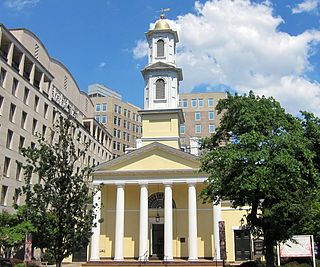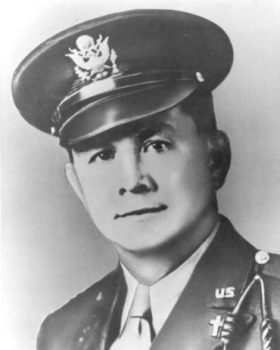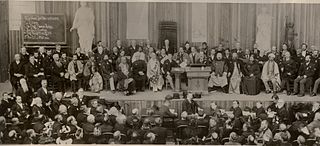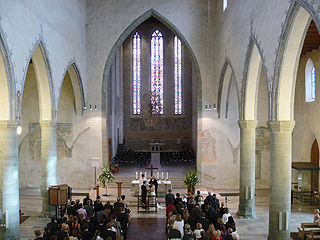
The religious affiliations of presidents of the United States can affect their electability, shape their stances on policy matters and their visions of society and also how they want to lead it. Speculation of Thomas Jefferson, Abraham Lincoln, and William Howard Taft being atheists was reported during election campaigns, while others, such as Jimmy Carter, used faith as a defining aspect of their campaigns and tenure to hold the office.

Sun Myung Moon was a Korean religious leader, also known for his business ventures and support for conservative political causes. A messiah claimant, he was the founder of the Unification movement, and of its widely noted "Blessing" or mass wedding ceremonies, and the author of its unique theology the Divine Principle. He was an anti-communist and an advocate for Korean reunification, for which he was recognized by the governments of both North and South Korea. Businesses he promoted included News World Communications, an international news media corporation known for its American subsidiary The Washington Times, and Tongil Group, a South Korean business group (chaebol), as well as other related organizations.
The United Methodist Church (UMC) is a worldwide mainline Protestant denomination based in the United States, and a major part of Methodism. In the 19th century, its main predecessor, the Methodist Episcopal Church, was a leader in evangelicalism. The present denomination was founded in 1968 in Dallas, Texas, by union of the Methodist Church and the Evangelical United Brethren Church. The UMC traces its roots back to the revival movement of John and Charles Wesley in England, as well as the Great Awakening in the United States. As such, the church's theological orientation is decidedly Wesleyan. It embraces liturgical worship, holiness, and evangelical elements.

The United Nations is headquartered in Midtown Manhattan, New York City, United States. The complex has served as the official headquarters of the United Nations since its completion in 1951. It is in the Turtle Bay neighborhood of Manhattan, on 17 to 18 acres of grounds overlooking the East River. It borders First Avenue to the west, East 42nd Street to the south, East 48th Street to the north, and the East River to the east.

The Four Chaplains, also referred to as the Immortal Chaplains or the Dorchester Chaplains, were four World War II chaplains who died rescuing civilian and military personnel as the American troop ship SS Dorchester sank on February 3, 1943, in what has been referred to as the second-worst sea disaster of World War II. The Dorchester was a civilian liner converted for military service in World War II as a War Shipping Administration troop transport. She was able to carry slightly more than 900 military passengers and crew.

The Family Federation for World Peace and Unification, widely known as the Unification Church, is a new religious movement whose members are called Unificationists, or "Moonies". It was officially founded on 1 May 1954 under the name Holy Spirit Association for the Unification of World Christianity (HSA-UWC) in Seoul, South Korea, by Sun Myung Moon (1920–2012). Moon and his wife Hak Ja Han were the leaders of the church and are honored by its members as their "True Parents(참부모)."

Interfaith dialogue refers to cooperative, constructive, and positive interaction between people of different religious traditions and/or spiritual or humanistic beliefs, at both the individual and institutional levels. It is distinct from syncretism or alternative religion, in that dialogue often involves promoting understanding between different religions or beliefs to increase acceptance of others, rather than to synthesize new beliefs.

Hak Ja Han is a Korean religious leader. Her late husband Sun Myung Moon was the founder of the Unification movement, also known as the Unification Church (UC). Han and Moon were married in April 1960 and have 10 living children and over 30 grandchildren. In 1992, she established the Women's Federation for World Peace, and traveled the world speaking on its behalf. She is the leader of the Family Federation for World Peace and Unification, in which she is called "True Mother" and "Mother of Peace".

The Christian Flag is an ecumenical flag designed in the early 20th century to represent much of Christianity and Christendom. Since its adoption by the United States Federal Council of Churches in 1942, it has been used by congregations of many Christian traditions, including Anglican, Baptist, Congregationalist, Lutheran, Mennonite, Methodist, Moravian, Presbyterian, and Reformed, among others.

There have been several meetings referred to as a Parliament of the World's Religions, the first being the World's Parliament of Religions of 1893, which was an attempt to create a global dialogue of faiths. The event was celebrated by another conference on its centenary in 1993. This led to a new series of conferences under the official title Parliament of the World's Religions with the same goal of trying to create a global dialogue of faiths.
Interfaith marriage, sometimes called a "mixed marriage", is marriage between spouses professing different religions. Although interfaith marriages are often established as civil marriages, in some instances they may be established as a religious marriage. This depends on religious doctrine of each of the two parties' religions; some prohibit interfaith marriage, and among others there are varying degrees of permissibility.
Anwarul Karim Chowdhury is a Bangladeshi diplomat most noted for his work on development in the poorest nations, global peace and championing the rights of women and children. In a speech he gave in 2005, Chowdhury stated: "We should not forget that when women are marginalized, there is little chance for an open and participatory society." In his role as the leading United Nations Culture of Peace emissary, he said in May 2010 that peace efforts would continually fail until people embraced humanity's oneness.

The World Methodist Council (WMC), founded in 1881, is a consultative body and association of churches in the Methodist tradition. It comprises 80 member denominations in 138 countries which together represent an estimated 80 million people; this includes approximately 60 million committed members and a further 20 million adherents. It is the fifth-largest Christian communion after the Roman Catholic Church, Eastern Orthodox Church, Anglican Communion, and World Communion of Reformed Churches.
Kenneth R. Cracknell was a British specialist in interfaith dialogue and the Christian theology of religions.

The General Commission on Christian Unity and Interreligious Concerns (GCCUIC) addresses the interreligious and ecumenical concerns of The United Methodist Church. The GCCUIC's office is located at The Interchurch Center in New York City. The Commission's President is Bishop Mary Ann Swenson and the General Secretary is Stephen J. Sidorak Jr. The Ecumenical Officer of the Council of Bishops is Bishop Sharon Zimmerman Rader and serves as the corporate ecumenical officer of The United Methodist Church, working in collaboration with GCCUIC.
The Temple of Understanding is an interfaith organization founded in 1960 by Juliet Hollister and located in New York City.

The Interchurch Center is a 19-story limestone-clad office building located at 475 Riverside Drive and West 120th Street in Morningside Heights, Manhattan, New York City. It is the headquarters for the international humanitarian ministry Church World Service, and also houses a wide variety of church agencies and ecumenical and interfaith organizations as well as some nonprofit foundations and faith-related organizations, including the Religion Communicators Council. The National Council of Churches also occupied the building from its inception, but in February 2013, the NCC consolidated its offices on Capitol Hill in Washington, DC, and vacated its New York headquarters facilities. NCC's sister agency, Church World Service, remains a tenant in the building.

An interfaith marriage, also known as an interreligious marriage, is defined by Christian denominations as a marriage between a Christian and a non-Christian, whereas an interdenominational marriage is between members of two different Christian denominations, such as a Lutheran Christian wedding a Catholic Christian, for example.

Arnold E. Resnicoff is an American Conservative rabbi who served as a military officer and military chaplain. He served in Vietnam and Europe before attending rabbinical school. He then served as a U.S. Navy Chaplain for almost 25 years. He promoted the creation of the Vietnam Veterans Memorial and delivered the closing prayer at its 1982 dedication. In 1984 the President of the United States spoke on his eyewitness account of the 1983 Beirut barracks bombing. After retiring from the military he was National Director of Interreligious Affairs for the American Jewish Committee and served as Special Assistant to the Secretary and Chief of Staff of the United States Air Force, serving at the equivalent military rank of Brigadier General.
















